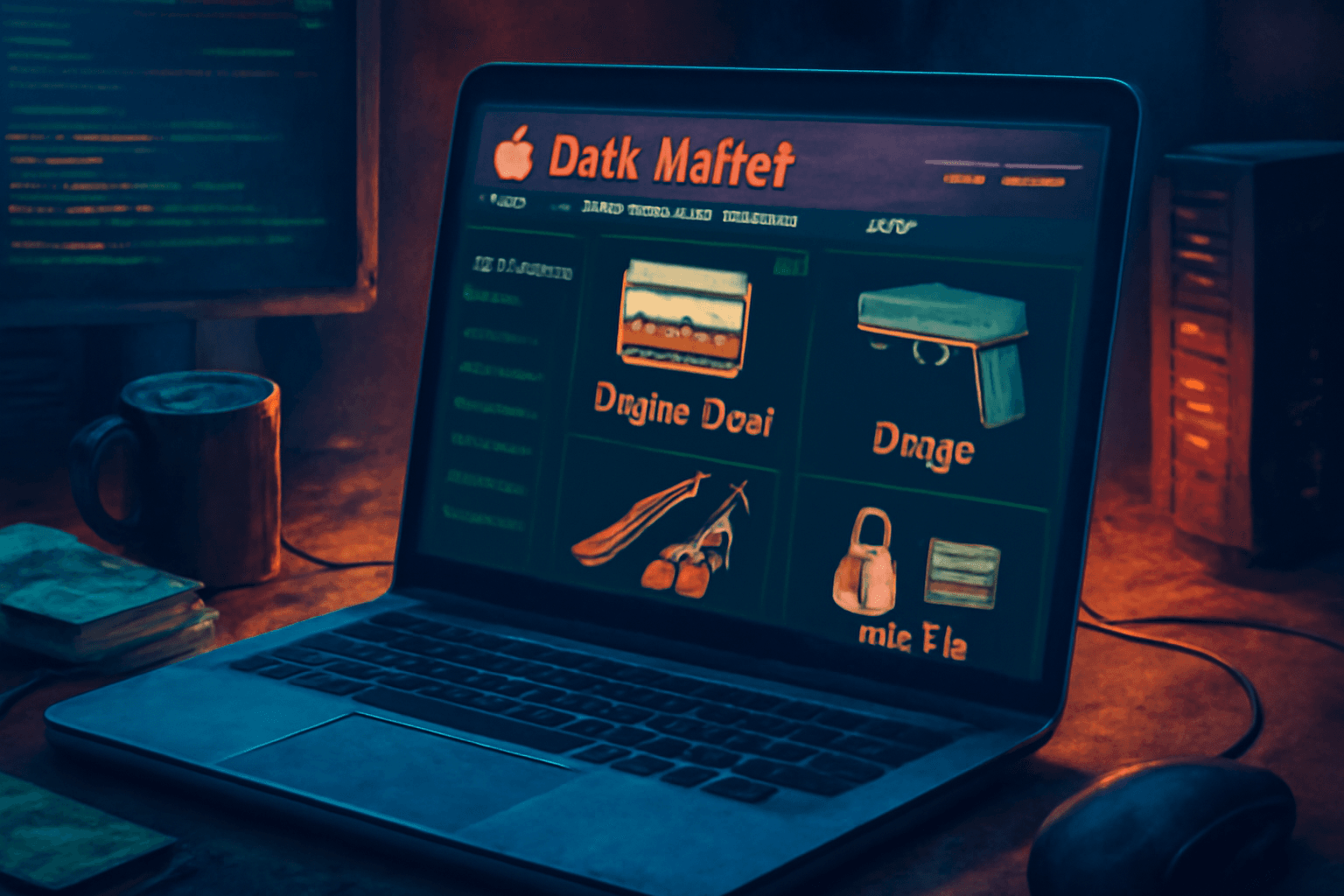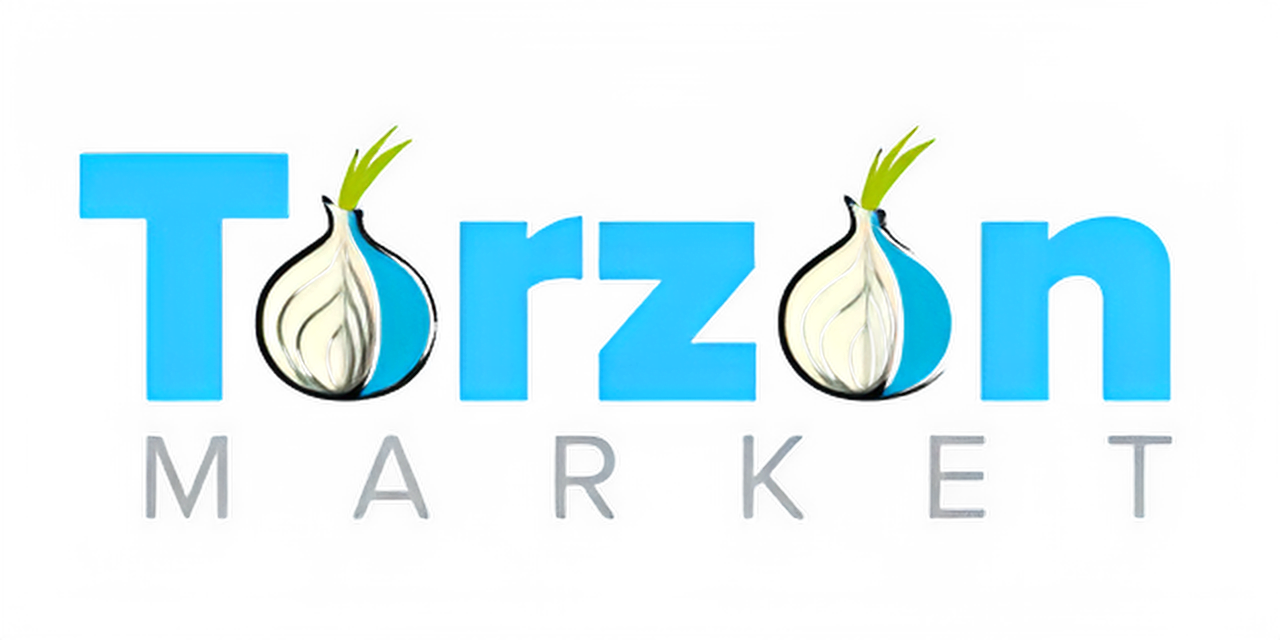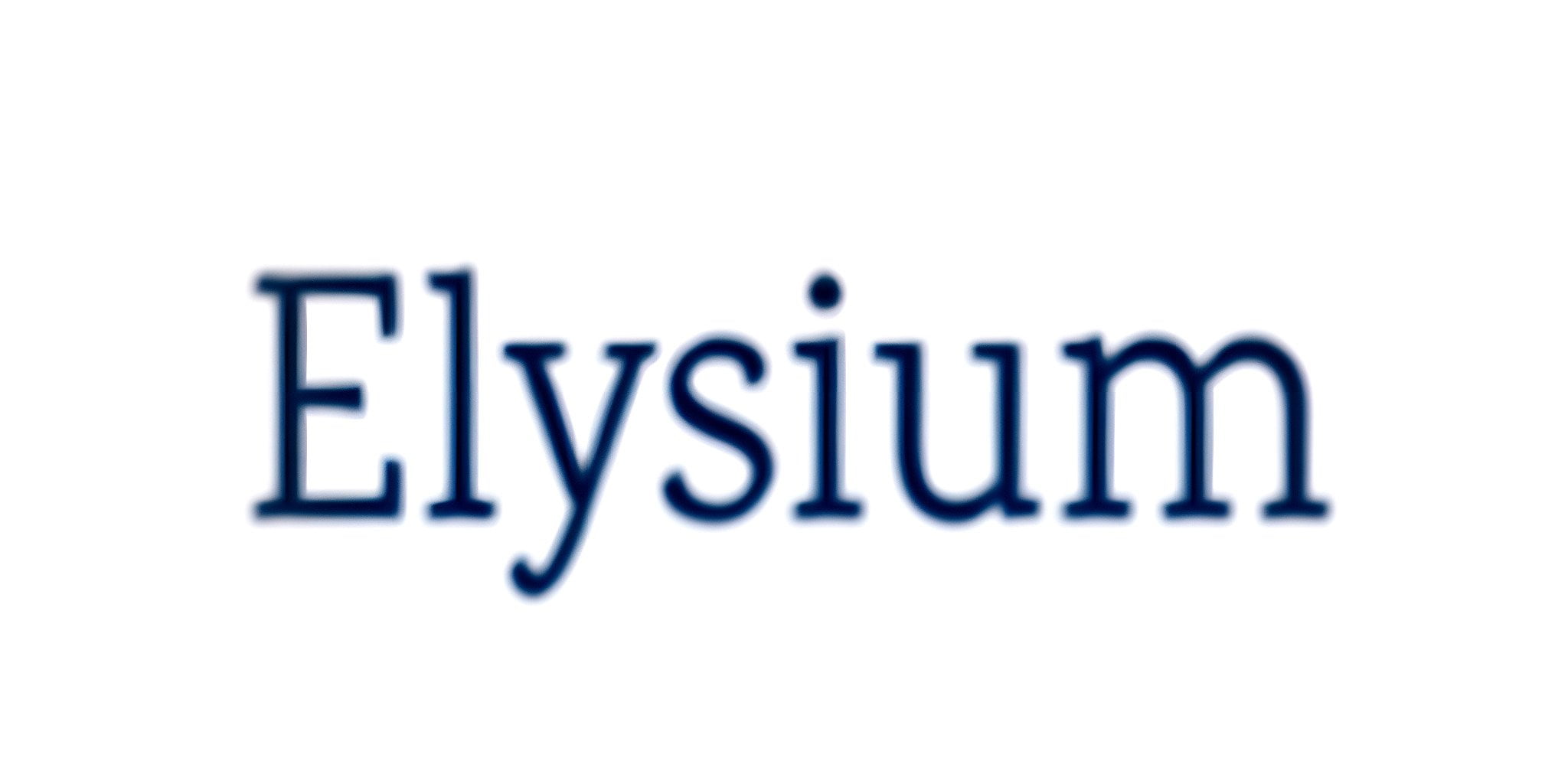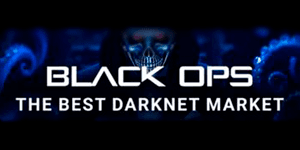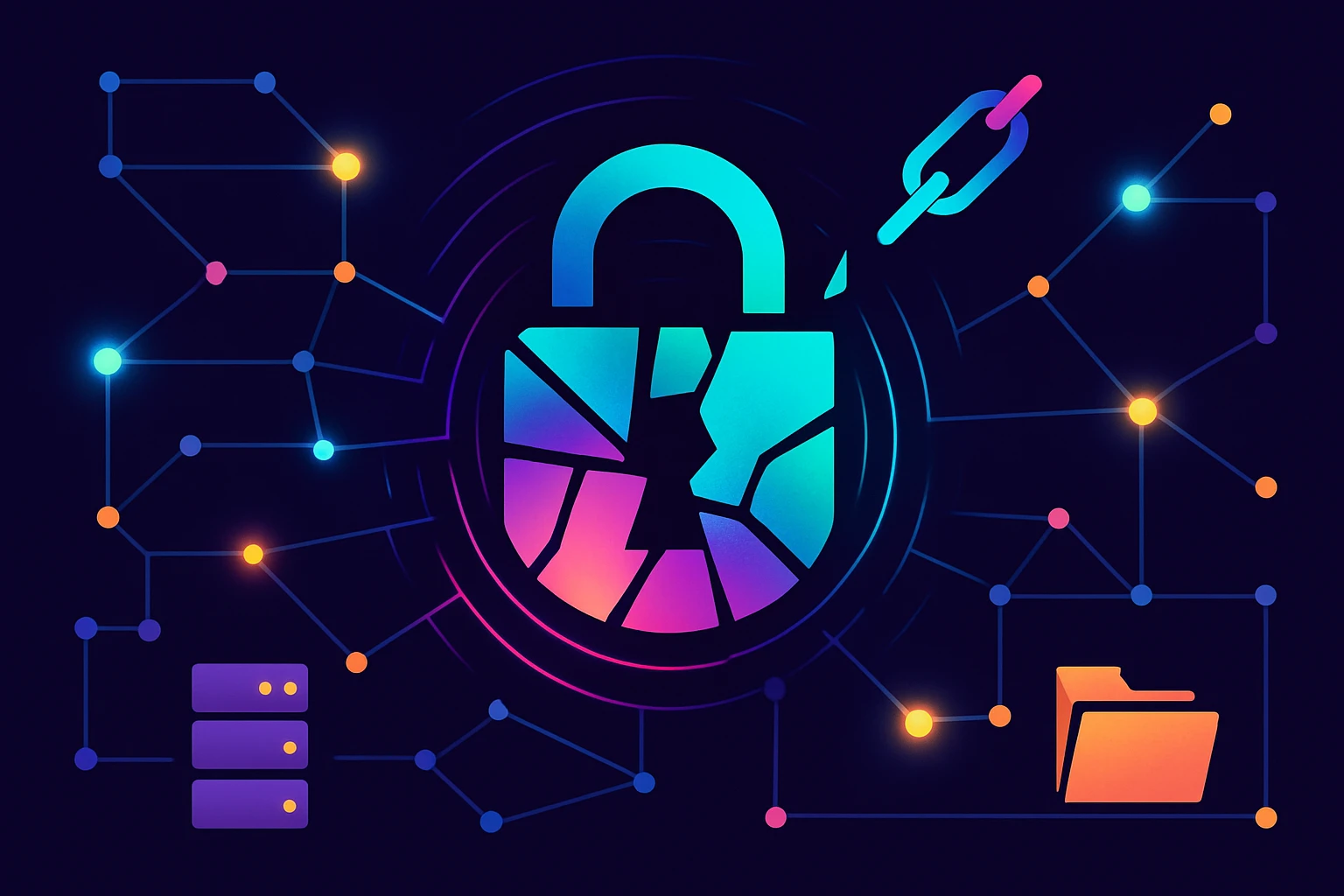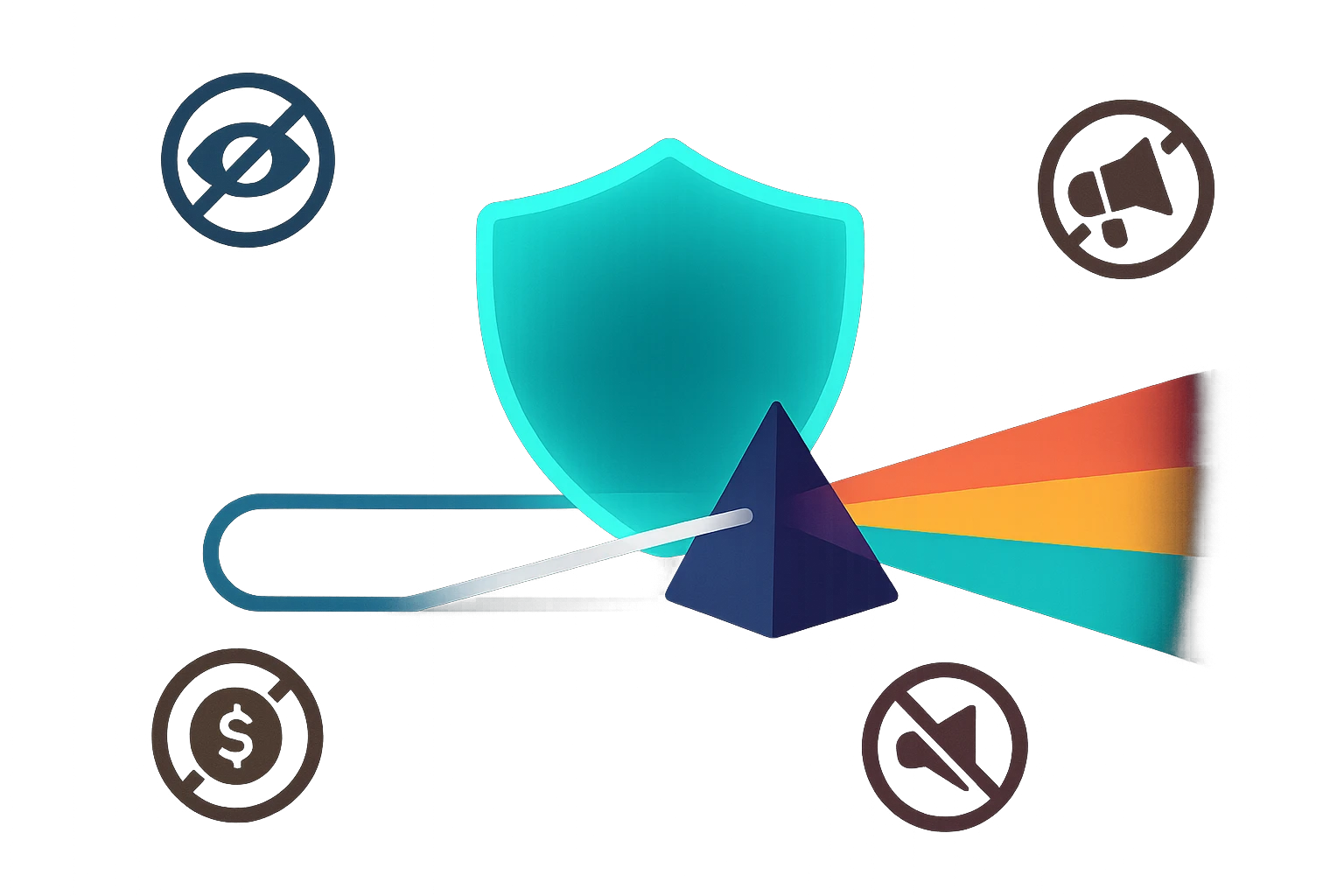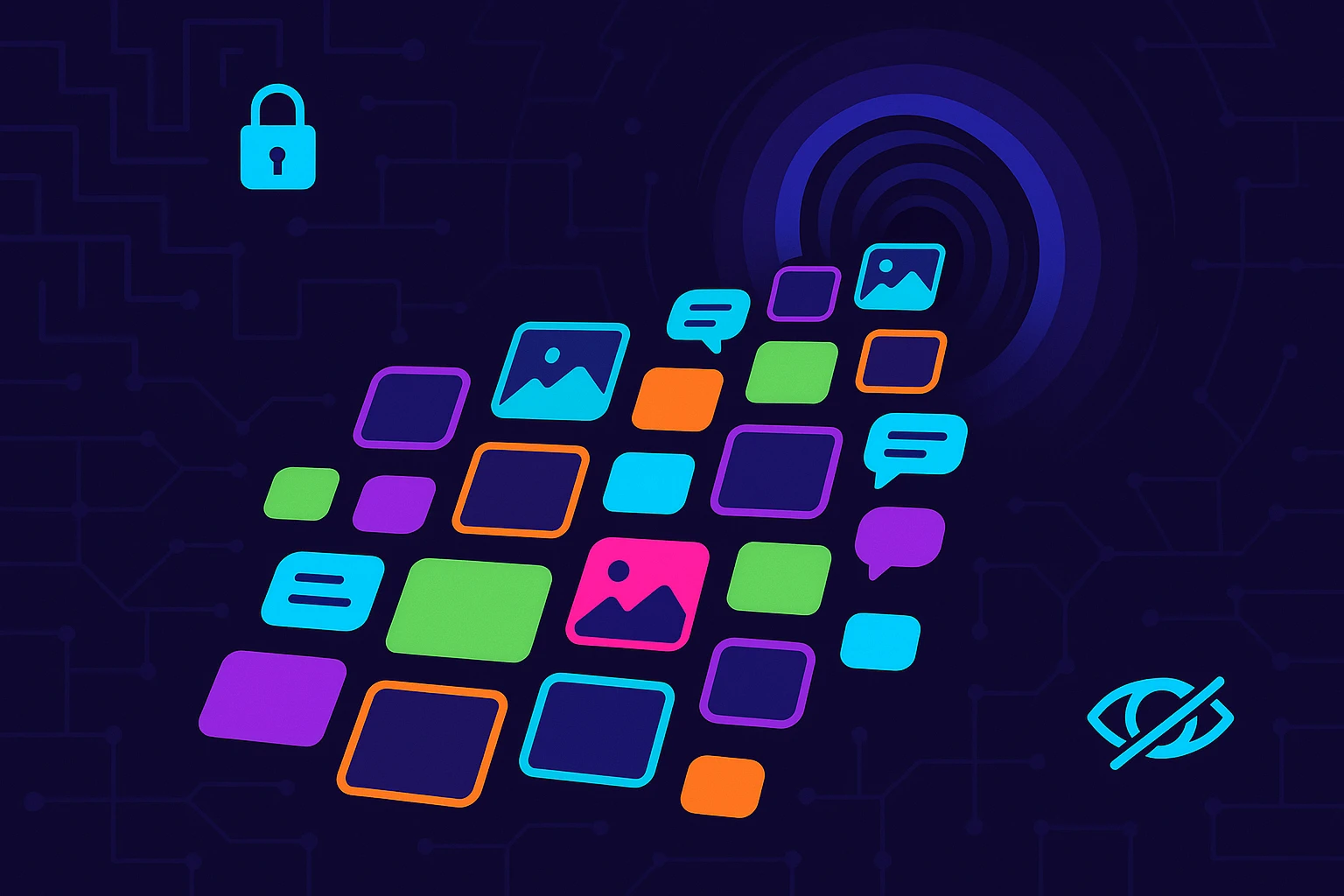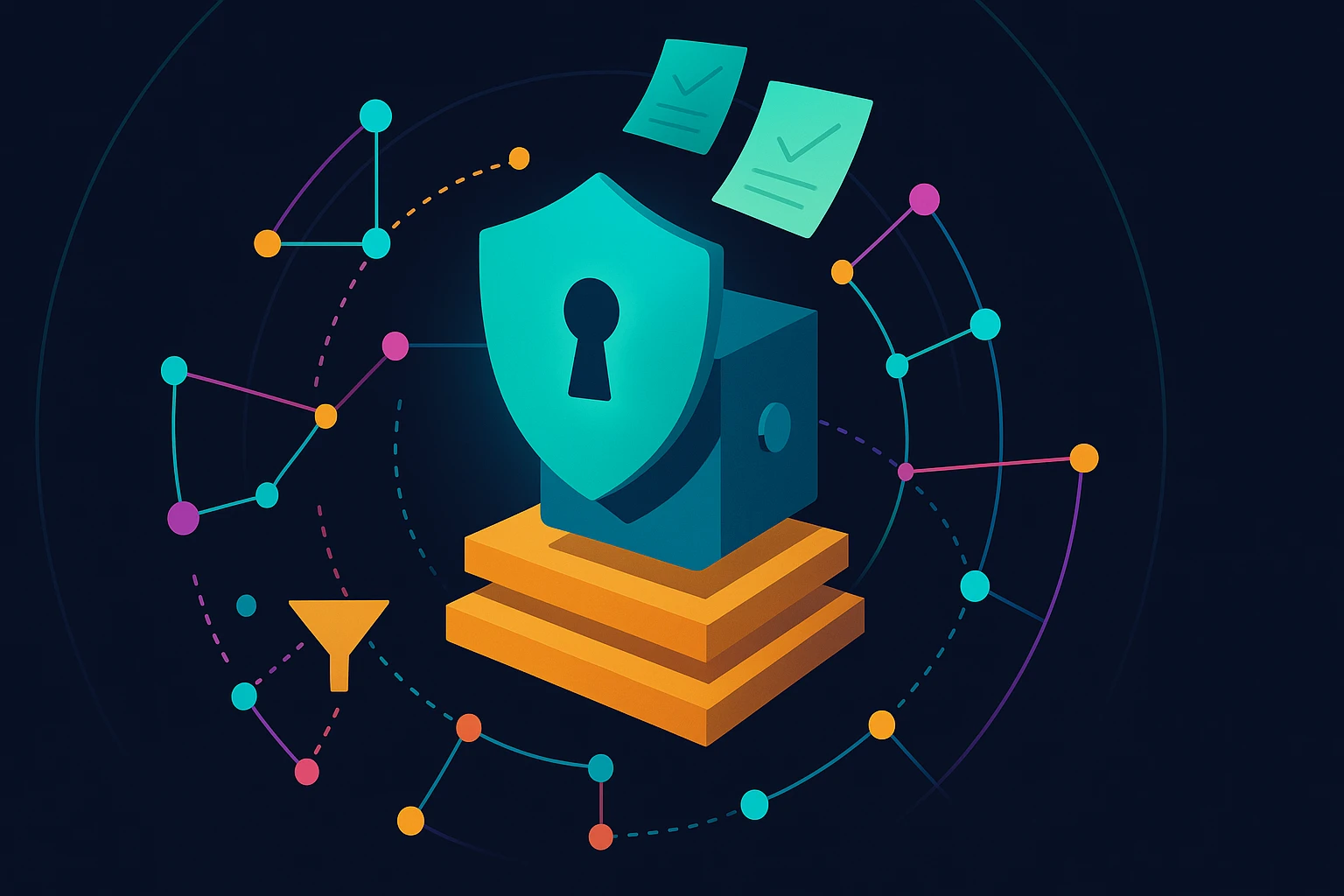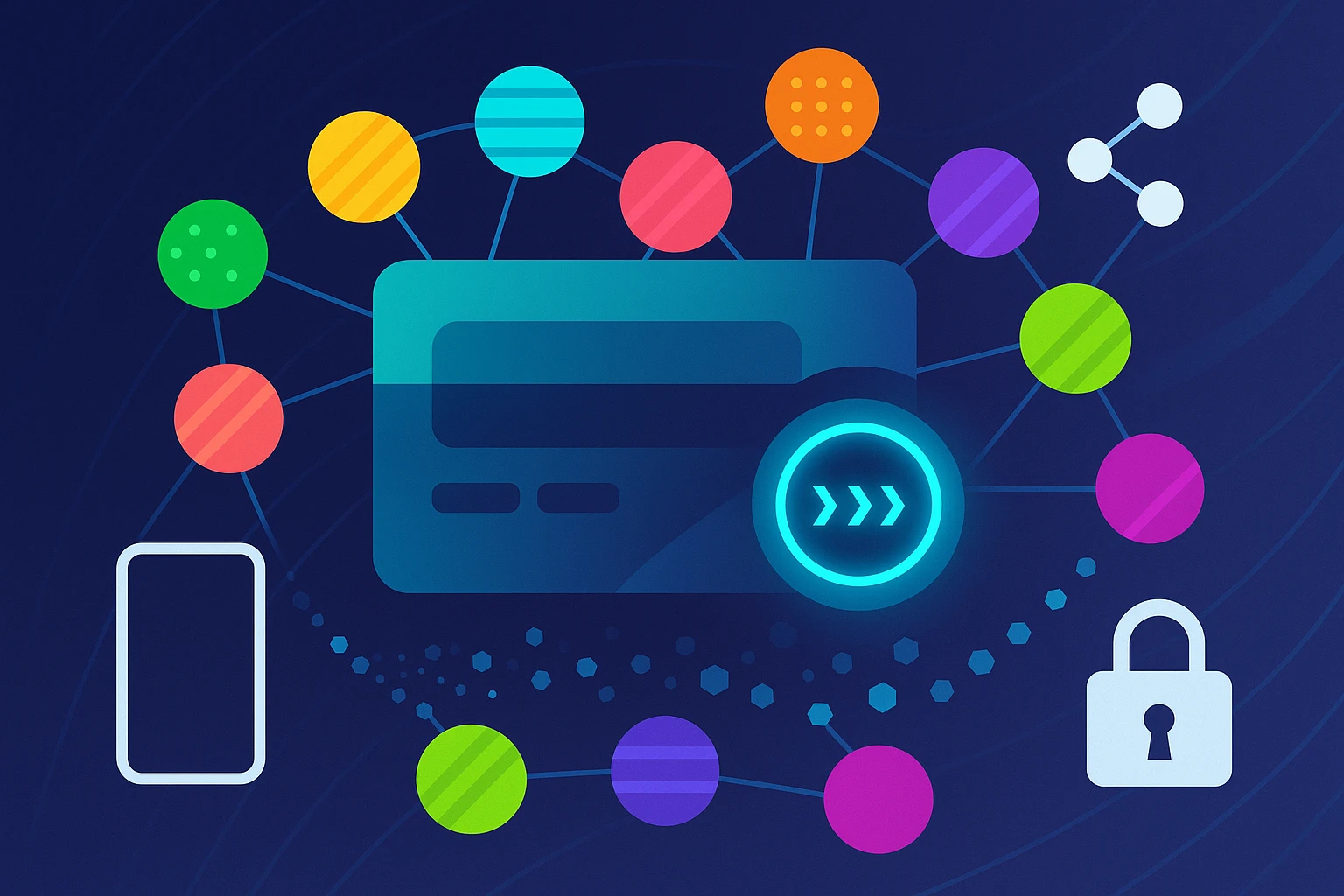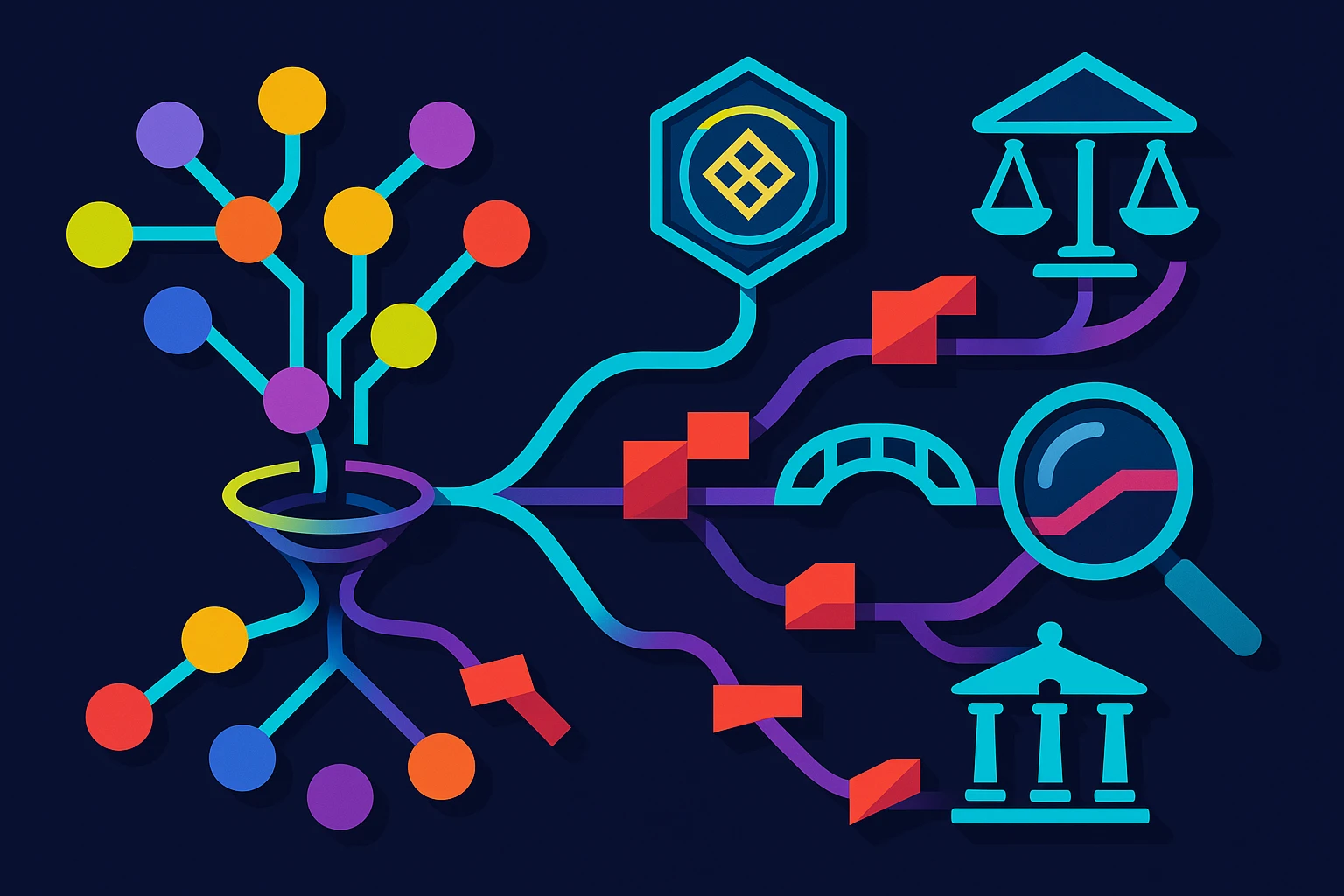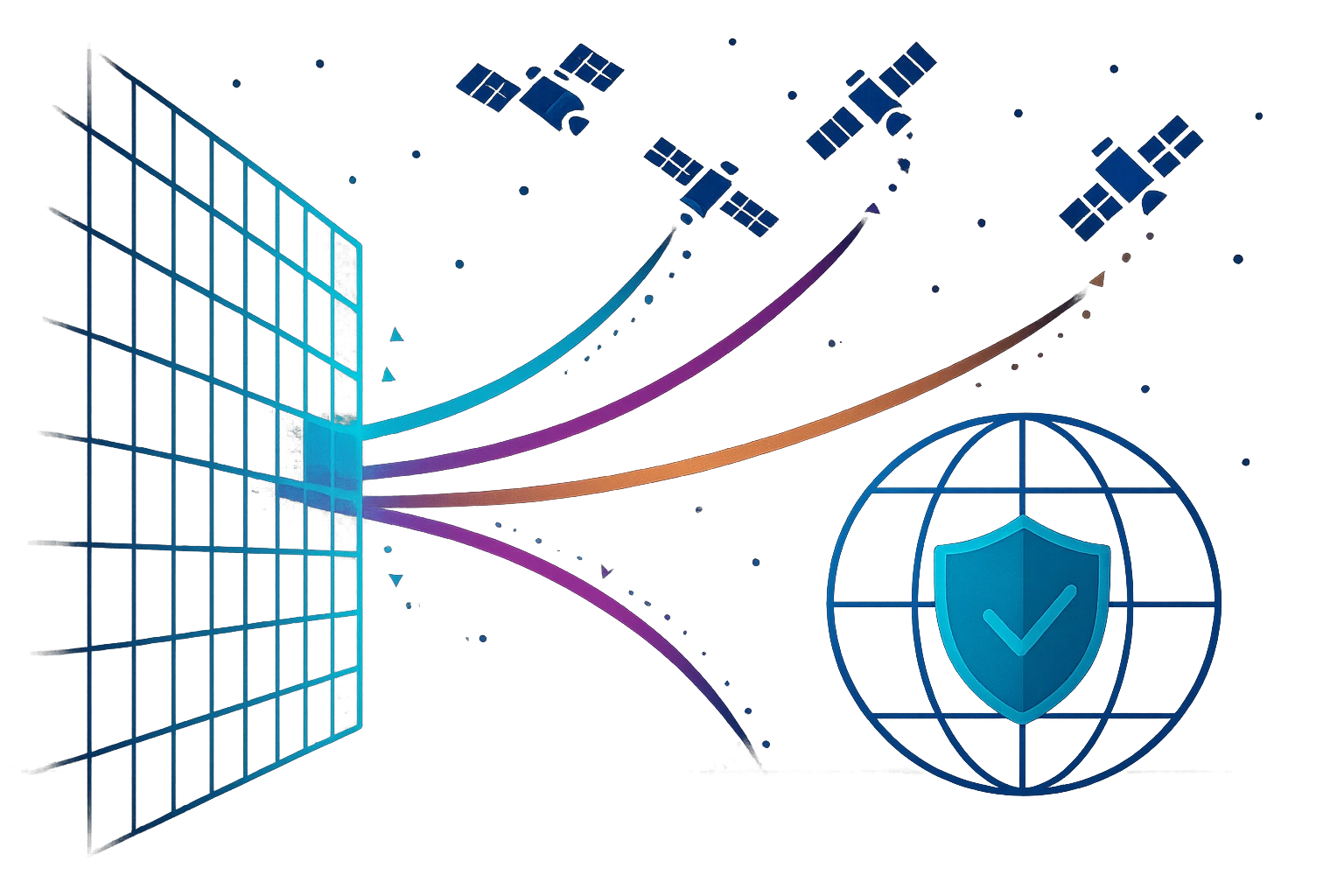Last Updated on May 14, 2025 by DarkNet
Introduction
The Dark Web stands as one of the most enigmatic regions of the internet, offering covert access to illicit marketplaces that operate outside traditional law enforcement oversight. Despite aggressive crackdowns, these hidden markets continue to thrive and adapt, providing an ever-expanding range of illegal goods and services. Understanding the driving forces behind their growth—alongside the mechanics of how they function—is crucial for both cybersecurity professionals and policymakers tasked with mitigating emerging threats.
Relevance of the Topic
Recent statistics indicate that the Tor network attracts approximately 2.7 million users each day. Originally designed to support free expression by safeguarding anonymity, Tor has become a nexus for criminal activity as well. One of the more intriguing developments in Tor usage is Germany surpassing the United States in user numbers for the first time. Analysts speculate that this shift may be tied to growing privacy concerns in Europe, alongside a broader cultural acceptance of encrypted communication tools.
Complicating matters further is the widening use of alternative channels, such as Telegram groups, private forums, and even hidden social media communities. While .onion services remain central to Dark Web commerce, these additional platforms give cybercriminals greater flexibility and resilience. They can quickly pivot from one network to another in response to marketplace shutdowns or law enforcement scrutiny, making it increasingly difficult for investigators to pinpoint and dismantle criminal enterprises.
Goals and Objectives
This article sets out to illustrate how the leading Dark Web marketplaces are structured in the years 2024–2025. By delving into their core offerings—ranging from illegal narcotics to sophisticated hacking tools—we can gain a clearer perspective on the criminal ecosystem that fuels a substantial portion of online illicit trade.
Moreover, it aims to examine the goods and services sold on these platforms, shining a light on the evolving tactics vendors use to market stolen data, counterfeit items, and various forms of digital contraband. This information is vital for crafting effective countermeasures, as each new trend or innovation in the Dark Web marketplace raises the stakes for law enforcement and cybersecurity teams.
Finally, the article will highlight the escalating risks tied to financial crimes and data breaches, both of which have become alarmingly common in recent years. As ransomware attacks surge and personal data is increasingly commodified, the Dark Web stands out as a primary facilitator of cybercrime operations. By reviewing these complex dynamics, we aim to equip readers with a comprehensive understanding of the threats posed by Dark Web marketplaces—and the strategies needed to combat them.
Key Darknet Trends
The Darknet is in constant flux, shaped by technological innovations, shifting user behaviors, and law enforcement crackdowns. To understand how these hidden marketplaces operate and why they continue to flourish, it’s useful to examine the primary trends that define today’s underground economy.
Common Categories of Illicit Content
One of the most distinctive aspects of Darknet marketplaces is their incredible diversity of illegal products and services. Many of these markets function as “one-stop shops,” hosting thousands of listings that include:
- Drugs and Narcotics: From synthetic opioids to designer stimulants, buyers can find a vast array of substances with detailed vendor descriptions, purported purity levels, and user reviews.
- Counterfeit Documents: Passports, driver’s licenses, and birth certificates are frequently sold, often accompanied by guidance on how to use them without detection.
- Firearms and Weapons: While less common than digital items, listings sometimes feature firearms, ammunition, or even more exotic weaponry, albeit subject to regional shipping constraints.
- Hacking Tools and Malware: These can range from exploit kits and remote access trojans to ransomware-as-a-service offerings, enabling low-skilled criminals to launch sophisticated cyberattacks.
- Stolen Data Stores: Specialized “shops” focus on personal data, credit card details, or login credentials. Often sorted by country, card type, or account balance, these platforms help facilitate financial fraud and identity theft.
In this broad ecosystem, data breaches are a major currency. Cybercriminals exchange large troves of compromised login credentials, financial information, and personal identifiers, fueling subsequent attacks like phishing campaigns and account takeovers. By giving malicious actors direct access to sensitive records, these data-focused marketplaces significantly expand the scope and impact of identity-based crimes.
The Rise of Financial Crimes
A defining trend in recent years has been the escalation of financial crimes facilitated by Darknet transactions. Two core elements underpin this surge:
1. Ransomware and Cryptocurrency:
Ransomware groups increasingly leverage Darknet forums to recruit affiliates, trade exploits, and launder stolen funds. Cryptocurrencies serve as the backbone of these operations, allowing attackers to collect ransoms without tying payments to specific financial institutions. As a result, the overall volume of cryptocurrency tied to ransomware has grown, driving law enforcement agencies to invest in advanced blockchain analytics.
2. Demand for Payment Data and Personal Information:
Stolen credit card numbers, bank login credentials, and identity documents are consistently in high demand. Buyers often use these details for fraudulent purchases or large-scale identity theft schemes. With global e-commerce on the rise, criminals capitalize on weaker security protocols in certain regions, transforming credit cards and personal data into high-value commodities. The ease of encryption-based communication and anonymous digital payments helps keep transactions hidden from regulators and financial institutions, perpetuating the cycle of fraud and data theft.
Platform Fragmentation and Multi-Channel Approach
While .onion sites remain the Darknet’s backbone, an increasing number of markets and cybercriminal groups now spread across multiple platforms:
- Telegram Channels: Encrypted messaging apps like Telegram have become crucial for direct interactions between buyers, sellers, and forum moderators. Vendors often provide live updates on restocked items, flash sales, or new drop sites through these channels, capitalizing on Telegram’s user-friendly features and expansive reach.
- Mirror Sites and Backup Domains: To avoid downtime or seizure by law enforcement, marketplaces commonly set up multiple “mirror” domains. When one site is taken offline, users can easily transition to another, preserving both vendor reputations and ongoing transactions.
- Private Forums and Invite-Only Spaces: Increasingly, cybercriminals move from large public forums to smaller, vetted communities where trust is built through private referrals. These exclusive groups share more sensitive knowledge, including advanced hacking tools or insider data leaks, away from prying eyes.
This multichannel strategy enables Darknet operators to circumvent crackdowns and remain resilient. It also complicates the investigative efforts of cybersecurity experts and law enforcement agencies, who must track an ever-growing number of communication avenues and hidden marketplaces. As long as criminals can adapt by decentralizing their operations and adopting new technologies, efforts to shut down these platforms will remain a continual game of cat and mouse.
Technological Aspects and Anonymity
Methods of Concealment and Protection
Dark web users rely on a combination of tools and networks to maintain their anonymity. Tor (The Onion Router) remains the most popular, routing data through multiple encrypted layers to hide users’ real IP addresses. Some individuals and groups also leverage I2P, a peer-to-peer network designed for continuous routing within a decentralized environment. Beyond these specialized networks, users often connect through VPN services and proxy chains to further mask their physical locations.
To counter law enforcement efforts at deanonymization, criminals frequently adopt tactics such as frequent username changes, disposable email accounts, and strict operational security (OPSEC) protocols. In many cases, they refrain from reusing wallet addresses for cryptocurrency transactions, as this can reveal patterns over time. By compartmentalizing their online activities and avoiding direct ties to personal identities, they reduce the risk of detection and arrest.
Payment Systems and Escrow
Cryptocurrencies are the primary method of exchange on the dark web. Bitcoin remains the most widely recognized, though it has become easier to trace through blockchain analytics. As a result, privacy-focused coins like Monero and Litecoin have gained traction among those seeking tighter anonymity. Some marketplaces also explore emerging alternatives, offering greater obfuscation techniques to bypass law enforcement surveillance.
Escrow services act as intermediaries in high-value or higher-risk transactions. They help establish trust between buyers and sellers by holding payments until both parties confirm the deal’s completion. In tandem with escrow, robust feedback mechanisms allow users to review sellers’ reliability. These rating systems shape market reputations and encourage fair dealing, at least within the confines of illicit trade.
OPSEC and User Verification
Operational security (OPSEC) extends to how marketplaces and forums vet newcomers and moderate ongoing transactions. Moderators often request proofs of credibility, such as verified PGP signatures, to ensure participants are not infiltrators or scammers. Some platforms employ multi-factor authentication methods, compelling users to provide a secondary passphrase or a one-time code delivered through encrypted channels.
Private invitation systems further tighten membership. By limiting access to vetted referrals, markets reduce the chances of law enforcement infiltration. In practice, this means potential buyers and sellers may undergo background checks within forum communities before receiving an invite. This layered approach, combining encryption, strict moderation, and personal referrals, aims to preserve the secrecy and continuity of the marketplace.
Overview of Major Darknet Marketplaces (2024–2025)
Abacus Market
Abacus Market rose to prominence following the shutdown of AlphaBay. With more than 40,000 listings and an estimated valuation of around USD 15 million, it features a broad array of illicit products, from narcotics and cybercrime tools to forged documents. Abacus relies on robust escrow services, vendor rating systems, and multiple cryptocurrency payment options to streamline transactions and maintain a degree of trust among its user base.
WTN Market (WeTheNorth)
WeTheNorth, launched in Canada in 2021, caters to both domestic and international audiences. It offers counterfeit documents, financial fraud tools, hacking services, and an active forum for community discussions. Relying on a closed-invitation model, WTN maintains strict verification procedures and emphasizes high-level anonymity measures, making it a popular choice for users seeking additional layers of security.
MGM GRAND Market
MGM GRAND Market is a newer entrant distinguished by its focus on luxury-branded counterfeit items and high-stakes financial fraud. While it also lists drugs, stolen data, and hacking tools, it markets itself as a higher-tier destination where vendors pay premium fees to list items. The site integrates advanced encryption and strict vendor screening, aiming to minimize scams and uphold its upscale reputation.
Nexus Market
Nexus Market emphasizes user-friendly navigation and community-driven content, offering detailed categories such as digital goods, personal data, and hacking services. It encourages vendor competition through frequent promotions and loyalty programs, making prices relatively competitive. Nexus also supports multi-signature escrow transactions, appealing to security-conscious buyers and sellers.
TorZon Market
TorZon Market debuted in September 2022 and quickly gained traction with over 11,600 listings, including narcotics, malware, and hacking utilities. Its transparent feedback system, which uses PGP-verified reviews, promotes vendor accountability. With an approximate market value of USD 15 million and support for both Bitcoin (BTC) and Monero (XMR), TorZon strikes a balance between accessibility and privacy-enhancing features.
Vortex Market
Vortex Market targets tech-savvy users by specializing in sophisticated cybercrime tools. Listings often include malware kits, exploit software, and zero-day vulnerabilities. Along with these, it hosts sections for counterfeit currency and stolen financial data. Buyers appreciate its support for multiple privacy-focused cryptocurrencies and its layered authentication processes designed to fend off law enforcement infiltration.
Elysium Market
Elysium Market brands itself as a “premium” marketplace, featuring exclusive vendors who undergo an intensive onboarding process. Known for its tight-knit community and high-value listings, Elysium favors privacy-oriented coins like Monero and employs a closed, invite-only system to limit access. This restricted membership model is meant to reduce scams and protect both buyers and sellers from external threats.
Ares Market
Ares Market specializes in a wide variety of illicit goods, ranging from stolen credit card data and forged IDs to hacking tutorials and exploit kits. It leverages a reputation-based vendor ranking system, where top sellers gain priority listings. Ares also uses sophisticated escrow protocols with optional multi-signature setups, offering a degree of protection in high-stakes transactions.
Flugsvamp 4.0 – Swedish Market
Flugsvamp 4.0 continues the lineage of Swedish-oriented darknet marketplaces. Catering mainly to a Scandinavian customer base, it lists a large selection of narcotics, counterfeit currency, and hacking tools. While its interface is available in multiple languages, it maintains an active Swedish-language forum that fosters a local community. Despite its regional focus, international buyers also frequent Flugsvamp 4.0 for unique product offerings and vendor specialization.
STYX Market
Launched in 2023, STYX Market focuses primarily on financial crimes. Its listings include stolen credit cards, hacked bank accounts, and cryptocurrency laundering tools. In addition to hosting a wide range of illicit financial products, STYX links to Telegram channels for real-time updates and user support. These channels make the market more agile, allowing it to shift operations and communicate alerts whenever law enforcement actions are detected. Bitcoin and Monero are the main payment options, reflecting the market’s emphasis on anonymity and decentralized commerce.
Brian’s Club
Operating since 2014, Brian’s Club is a long-running marketplace devoted to stolen credit card information, including dumps and CVVs. It maintains a reputation for offering fresh data through regular updates, sometimes in the form of auctions where buyers bid on newly acquired databases. Accepted payment methods include Bitcoin (BTC), Litecoin (LTC), and Cryptocheck. Thanks to its established track record and consistent influx of compromised financial data, Brian’s Club has built a large user base focused on fraud-related activities.
Russian Market
Despite its name, Russian Market serves a global audience and primarily uses English for communication. It is known for its relatively affordable prices and diverse product offerings, which include RDP access credentials, stealer logs, and other cybercrime tools. The platform also boasts specialized utilities like a PayPal cookie converter, catering to fraudsters looking to exploit payment gateways. Russian Market’s user-friendly structure and focus on data-driven trades have made it a prominent destination for mid-tier cybercriminals.
BidenCash
Launched in 2022, BidenCash gained notoriety through aggressive marketing campaigns that often featured free data dumps to attract new users. Specializing in stolen credit cards and PII (Personal Identifying Information), it quickly gained a sizable membership base. Strict user verification processes aim to filter out potential scammers and law enforcement infiltrators. BidenCash’s rapid rise and free “preview” dumps make it a hotspot for those seeking fresh financial data, though it also faces constant scrutiny from cybersecurity professionals.
Closed or Inactive Marketplaces
Reasons for Closure
Darknet marketplaces face numerous challenges that can lead to their shutdown. Law enforcement raids represent one of the most common causes, as coordinated international operations often target servers, seize assets, and arrest site operators. Hacks and data breaches also threaten a marketplace’s stability; when user information is compromised or administrators lose control of critical infrastructure, many platforms collapse under the resulting mistrust. Finally, an “exit scam” can occur when marketplace operators abruptly shut down the site, absconding with user funds held in escrow, leaving buyers and vendors at a loss.
Notable Examples
Several well-known marketplaces have become defunct for various reasons:
- Mellow (2023): A voluntary exit characterized by the administrators announcing the shutdown and returning partial user funds before going offline.
- Omicron (2022): Taken down by a hack that exposed sensitive data, quickly undermining user confidence and forcing the platform to close.
- Alphabay, World Market, Kingdom Market: Each had different outcomes—from high-profile law enforcement raids to sophisticated infiltration tactics—ultimately leading to their demise.
- Genesis and Others: Smaller marketplaces like Genesis encountered sudden closures due to internal disagreements, security breaches, or exit scams, leaving a gap quickly filled by rival platforms.
Risks and Vulnerabilities for Users
Fraud Schemes
Users on darknet marketplaces are frequently exposed to various forms of fraud. Exit scams occur when administrators abruptly shut down a platform, seizing escrowed funds and leaving buyers and vendors stranded. Additionally, some criminals create fake marketplaces or deploy phishing links to harvest login credentials. Database leaks are another concern; if a site’s security is compromised, user details—including transaction histories and wallet addresses—can end up in the hands of law enforcement or rival cybercriminals.
Threats to Personal Data
Personal data breaches pose a serious risk to darknet participants. Account compromises can expose users’ pseudonymous identities, while crypto wallet theft remains a prevalent threat when hackers intercept private keys. De-anonymization of both buyers and sellers can happen through advanced tracking techniques, such as malicious software implants or poor operational security practices. Malware is often disguised as legitimate listings, which unsuspecting users download, allowing cybercriminals to spy on activities or steal additional data.
Legal Liability
Engaging in illegal transactions exposes both buyers and sellers to legal repercussions. Depending on jurisdiction, charges can range from possession of illegal substances to conspiracy and money laundering. Law enforcement increasingly focuses on large-quantity purchasers and those seeking especially dangerous products, such as firearms or specialized hacking tools. Even smaller transactions can trigger investigations, given the international coordination among agencies targeting the dark web. Consequently, anyone participating in these markets faces the dual risk of financial and legal jeopardy.
Law Enforcement Methods
Law enforcement agencies worldwide employ an evolving array of strategies to track, infiltrate, and ultimately dismantle darknet marketplaces. These methods combine traditional policing techniques—such as undercover operations—with cutting-edge technological measures and multinational coordination. Below are some of the key approaches used to combat illicit online activity.
Undercover Agents
One of the most direct ways to gather intelligence is through human infiltration. Agencies often deploy undercover operatives who pose as buyers, sellers, or even marketplace administrators. By gaining the trust of other participants, these agents can observe transaction patterns, identify high-level operators, and collect detailed evidence on supply chains.
In some cases, law enforcement creates “stand-in” marketplaces, which look and operate like any other dark web platform. Criminals might migrate to these sites, unaware that all messages, escrow transactions, and user data are being monitored in real time by the authorities. This approach allows investigators to build comprehensive profiles of individual vendors and customers, as well as map out relationships between different criminal groups. Over time, such undercover efforts can yield enough evidence to secure multiple indictments, disrupt distribution networks, and deter new entrants from attempting to fill the vacuum left by a takedown.
Cyber Intelligence and Technical Analysis
Law enforcement agencies increasingly rely on cyber intelligence and technical analysis to penetrate the layers of anonymizing technology commonly used on the dark web. This often involves joint operations between national police forces, intelligence services, and specialized cyber units. By pooling resources and expertise, they can develop new techniques for unmasking hidden servers or tracing cryptocurrency flows.
A crucial aspect of this work is blockchain analysis, where investigators track the movement of Bitcoin, Monero, and other cryptocurrencies through public and private ledgers. Advanced software tools help detect unusual transaction patterns, identify known “mixers,” and link wallet addresses to real-world identities. Meanwhile, deanonymizing technologies range from exploiting zero-day vulnerabilities in Tor or I2P to intercepting network traffic through compromised nodes. Coupled with big data analytics, these methods enable law enforcement to piece together small fragments of information, ultimately revealing a broader picture of criminal activity.
International Cooperation
Given the global nature of darknet markets, international cooperation has become indispensable. Agencies such as Europol, Interpol, and the FBI coordinate large-scale operations spanning multiple jurisdictions. This can include simultaneously executing search warrants, seizing servers, freezing assets, and arresting suspects across different continents.
Information-sharing agreements and mutual legal assistance treaties (MLATs) make it possible for nations to overcome legal barriers, exchange critical intelligence, and prosecute offenders more effectively. High-profile joint operations—like those targeting Silk Road, AlphaBay, or other major marketplaces—have demonstrated the potency of multinational task forces. By sharing data about active vendors, known aliases, and emerging threats, these organizations can respond more rapidly to shifts in the darknet landscape, ultimately reducing the window of opportunity for criminals to exploit online anonymity.
Prospects and Forecast
The darknet is a dynamic environment, continually adapting to law enforcement pressure and evolving user demands. As more marketplaces emerge and established platforms seek new ways to conceal their operations, several trends are likely to shape the future of this clandestine economy.
Intensified Anonymity
Users and administrators alike are placing a greater emphasis on privacy and anonymity. Privacy-focused cryptocurrencies such as Monero and Zcash are seeing increased adoption, favored for their ability to obscure transaction details from blockchain analysis. While Bitcoin remains the most widely used cryptocurrency, it is subject to enhanced monitoring techniques, driving many illicit actors to diversify into coins offering built-in anonymity features.
Concurrently, platforms are shifting toward closed-invitation models and private communities. Rather than advertising publicly accessible onion links, some marketplaces operate on hidden or rotating domain names, accessible only through personal referrals or vetted membership. These secretive groups often communicate via encrypted messaging services, employing layers of verification to filter out potential law enforcement infiltrators.
Market Specialization and Fragmentation
As authorities crack down on large, all-in-one marketplaces, some actors opt to fragment into smaller, niche platforms. These specialized sites focus on specific categories of illicit goods—drugs, hacking tools, forged documents, or stolen financial data—attracting more specialized vendors and buyers. By narrowing the scope of their offerings, these marketplaces can maintain tighter operational security and develop more focused communities with higher trust levels.
Simultaneously, this “splintering” can lead to the rise of multiple smaller, more selective forums. Since these platforms are less conspicuous than major marketplaces, they tend to survive longer under the radar of law enforcement. However, this decentralization also requires more effort from buyers and sellers to navigate a growing array of sites, each with its own rules, escrow systems, and trust mechanisms.
Emerging Fraud Schemes and Threats
In response to a rapidly changing cybersecurity landscape, criminals are expanding their toolkits by leveraging novel technologies. Mobile applications and hidden marketplaces within messaging platforms—beyond just Telegram—are proliferating. These channels make it increasingly difficult for authorities to trace conversations and transactions, as they are often scattered across multiple, encrypted ecosystems.
Meanwhile, the proliferation of artificial intelligence (AI) is influencing the evolution of fraud. Criminals can use deepfake technology to impersonate individuals, bypass facial recognition checks, or carry out social engineering attacks. They may also automate hacking attempts using machine learning algorithms that adapt more quickly to security patches and defensive measures. This fusion of AI with illicit marketplaces could open the door to new forms of large-scale fraud, intensifying the cat-and-mouse game between cybercriminals and law enforcement.
Going forward, these trends—enhanced anonymity, specialized marketplaces, and increasingly sophisticated fraud—are likely to define the dark web’s trajectory. Cybersecurity professionals and investigators will need to employ equally advanced tools and collaborative strategies to keep pace with the rapidly shifting landscape.
Conclusion
Despite increased law enforcement efforts and frequent marketplace shutdowns, darknet platforms continue to evolve, adapting their strategies to evade detection and maintain lucrative revenue streams. This ongoing resilience underscores the global trend of rising financial crime and widespread data breaches, fueled by the ease of access to stolen personal and corporate information. As new marketplaces emerge, pivot to specialized niches, or migrate to more covert communication channels, cybercriminals remain steps ahead, continually refining their methods.
For cybersecurity professionals, vigilance is paramount. Tracking shifts in marketplace structures, payment methods, and user behaviors can help predict new threats before they escalate. Collaboration among international agencies, private-sector companies, and researchers is also critical. By pooling knowledge and technical capabilities, stakeholders can mount a more unified defense, slowing the growth of cybercrime and reducing its impact on businesses and individuals worldwide.
Sources
- European Union Drugs Agency (EUDA) — Data on Closure of Global Darknet Markets
- Abacus Market
- WTN Market / WeTheNorth
- MGM GRAND Market
- Nexus Market
- TorZon Market
- Vortex Market
- Elysium Market
- Ares Market
- Flugsvamp 4.0 – Swedish Market
- LockBit after Operation Cronos: what it means for you in 2025 – short and to the point - October 4, 2025
- Kagi: Finally, a Search Engine That Doesn’t Sell Your Soul (or Data) - October 3, 2025
- Nanochan: The Imageboard That Lives in the Shadows - October 1, 2025

